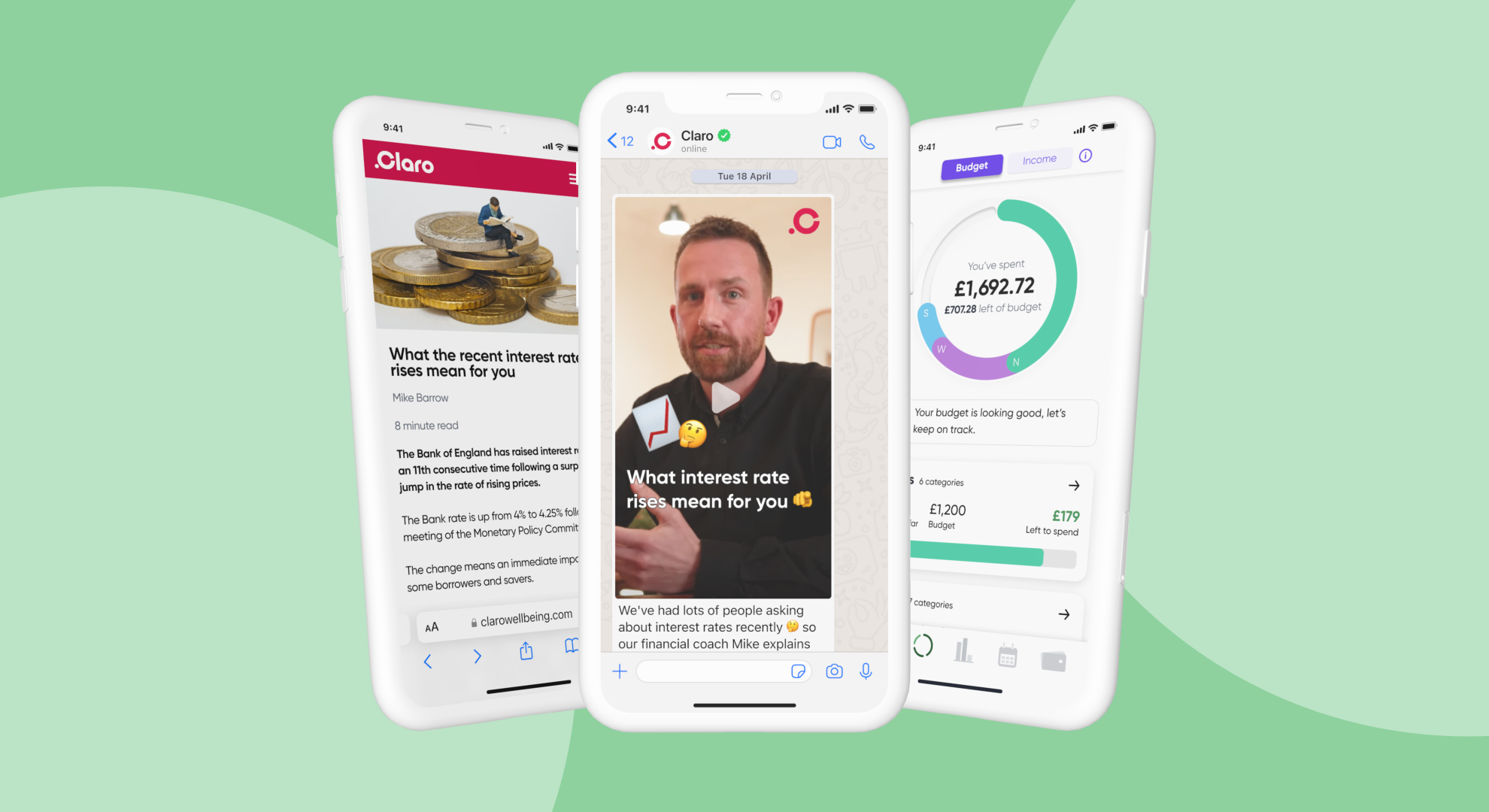6 min read
Should employers acknowledge Blue Monday?
Blue Monday (15 January) has a mixed reputation. But there’s still value in using the day to raise awareness of mental health and wellbeing...
3 min read
 Oliver Gudgeon
26-23-2023
Oliver Gudgeon
26-23-2023

Researching financial wellbeing providers to create a shortlist can be hard work. Before you start, take a step back and think about what you really need. This'll help you focus your research.
So, if your organisation is planning (or revamping) its financial wellbeing programme, here are five things to consider before you dive into creating a shortlist of providers.
Defining "financial wellbeing" is an important first step because it will help guide your thinking. You’ll ultimately need to communicate this point to stakeholders who are not familiar with the term or its benefits in an organisation, so it’s a good idea to get clear on this from the outset.
Financial wellbeing means something different to every employee. For some, it might mean feeling in better control of their finances with better budgeting technology. For others, it might mean understanding how to save and invest for the future.
To an organisation, financial wellbeing means helping people reduce their overall financial stress, so they have better overall wellbeing and can bring their full attention to work.
In your direct team, you'll all need to be agreed on what you mean by financial wellbeing, while being realistic about how to introduce the concept to your senior stakeholders.
Since you’re already reading up on the topic, you’re already doing a great job of this.
Reading industry publications, talking to experts, attending webinars and events, and connecting with others on LinkedIn who have implemented financial wellbeing are all great ways to understand what can and will work well for your organisation.
Some top resources we recommend include:
The cost of living crisis has put a strain on all of our finances. But not everyone has the same exact needs and obstacles.
The best place to start is by speaking to your employees to see which areas of their finances they need help with.
A good way to get a picture of your employees’ personal finance priorities is by conducting a survey. This will help you understand what your employees will benefit from most when you implement your financial wellbeing benefit.
If this is the first time you're asking your people about their personal finances, remember it's a sensitive subject and you might not get the full picture straight away. That's why it's important to identify opportune moments throughout the year to keep the conversation going and build trust around having effective money conversations at work.
If you’re in the UK, you can also download Claro Wellbeing’s employee personal finance calendar, to find those moments to talk about financial wellbeing, and help you predict what money obstacles your people might be facing across the year.
There are many different types of services that can offer you financial wellbeing support.
Look into the various options available and consider which is right for your employees. For instance, you might consider one-to-one guidance or a holistic education platform to be the most valuable service to offer your people, rather than things like salary advance loans, which paper over the cracks.
You’ll also need to evaluate the costs and feasibility of different options and develop a plan that fits within your budget and resources. Costs typically range from as little as £0.75 per employee per month to £12 per employee per month, but can be higher depending on the exact type of service offering you go with.
Take a look into the types of ROI of financial wellbeing and see which metrics you (really) need to improve at your organisation.
A financial wellbeing programme is not something you just communicate out once. You’ll need to figure out the best way to work with other internal parties to ensure you achieve maximum uptake of the benefit.
If you have an internal comms team, you’ll need to ensure your plans align with theirs. And get support on the best way to get your message out.
For example, at Claro Wellbeing, we often encourage you to establish a financial wellbeing champion in your organisation. This is someone who can explain and promote the benefit, helping to share the successes of the benefit’s early adopters.
To sum up:
Start your 14-day free trial of Claro Wellbeing |
|
|
|
Try speaking to an expert financial coach and budgeting. And discover our educational financial content. Assess whether Claro Wellbeing is right for your team. |

6 min read
Blue Monday (15 January) has a mixed reputation. But there’s still value in using the day to raise awareness of mental health and wellbeing...

4 min read
Ever wished you had a money-whiz friend you could ask anything, as often as you like?

7 min read
Millions are being impacted by financial stress. Yet, until now, workers in frontline occupations have not been able to benefit from educational...